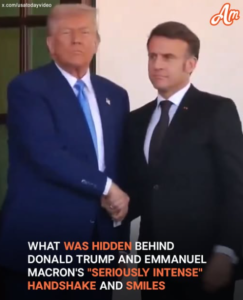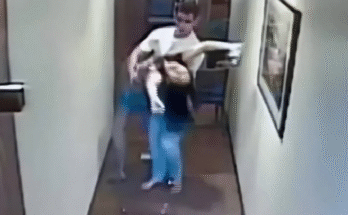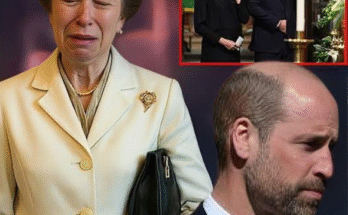During his time in office, former U.S. President Donald Trump became known for his aggressive, dominant handshakes with world leaders. One of the most analyzed exchanges was his prolonged and intense handshake with French President Emmanuel Macron. Body language experts have dissected this encounter, revealing that it was more than just a greeting—it was a strategic display of power and control.
The Infamous Handshake
One of the most notable instances occurred at the NATO Summit in May 2017. As Macron approached a group of world leaders, he initially appeared to head toward Trump before deliberately greeting German Chancellor Angela Merkel first. When Macron finally shook hands with Trump, their handshake turned into a gripping contest that lasted nearly 25 seconds. Both men clenched tightly, their knuckles turning white.
This handshake was widely perceived as Macron’s way of asserting himself and countering Trump’s known tendency to dominate through physical gestures. Macron later admitted in an interview that the handshake was “not innocent” and was meant to show that he “would not make small concessions, not even symbolic ones.”
The Power Play in Hand Gestures
Body language expert Chris Ulrich noted that Trump often uses a forceful handshake as a tactic to demonstrate authority. His usual approach involves pulling the other person toward him, reinforcing his dominance. However, Macron did not back down. Instead, he mirrored Trump’s strength, gripping just as firmly and refusing to be pulled in.
This moment signified a power struggle, a nonverbal negotiation of influence. Macron’s refusal to be overpowered sent a clear message: he was an equal, not a subordinate.
The Symbolism of Prolonged Contact
Prolonged handshakes in politics often indicate deeper diplomatic undercurrents. Etiquette expert Jacqueline Whitmore noted that the length of the handshake between Trump and Macron, combined with their intense eye contact, symbolized an ongoing test of wills. The handshake was not just a greeting; it was a silent negotiation, a way of setting the tone for their diplomatic relationship.
Macron’s decision to engage in this handshake battle showed that he understood Trump’s psychological tactics and was prepared to counter them. Rather than being intimidated, Macron played the game, reinforcing his own leadership position on the global stage.
Future Interactions
Their handshake dynamics continued to make headlines in subsequent meetings. At the G20 Summit later that year, their handshake was described as a “tug of war,” with both leaders pulling each other closer. These interactions reflected the underlying political tensions and alliances between the U.S. and France.
Macron’s handling of Trump’s dominant gestures indicated that he was not willing to be overshadowed. His firm stance in nonverbal communication mirrored his political position—one of resistance when necessary and cooperation on his own terms.
Conclusion
The handshake between Donald Trump and Emmanuel Macron was more than just a formality. It was a power play, a moment of silent negotiation between two strong-willed leaders. Body language experts agree that in politics, even the smallest physical gestures can speak volumes, and in this case, their handshake told the world exactly where they stood.


